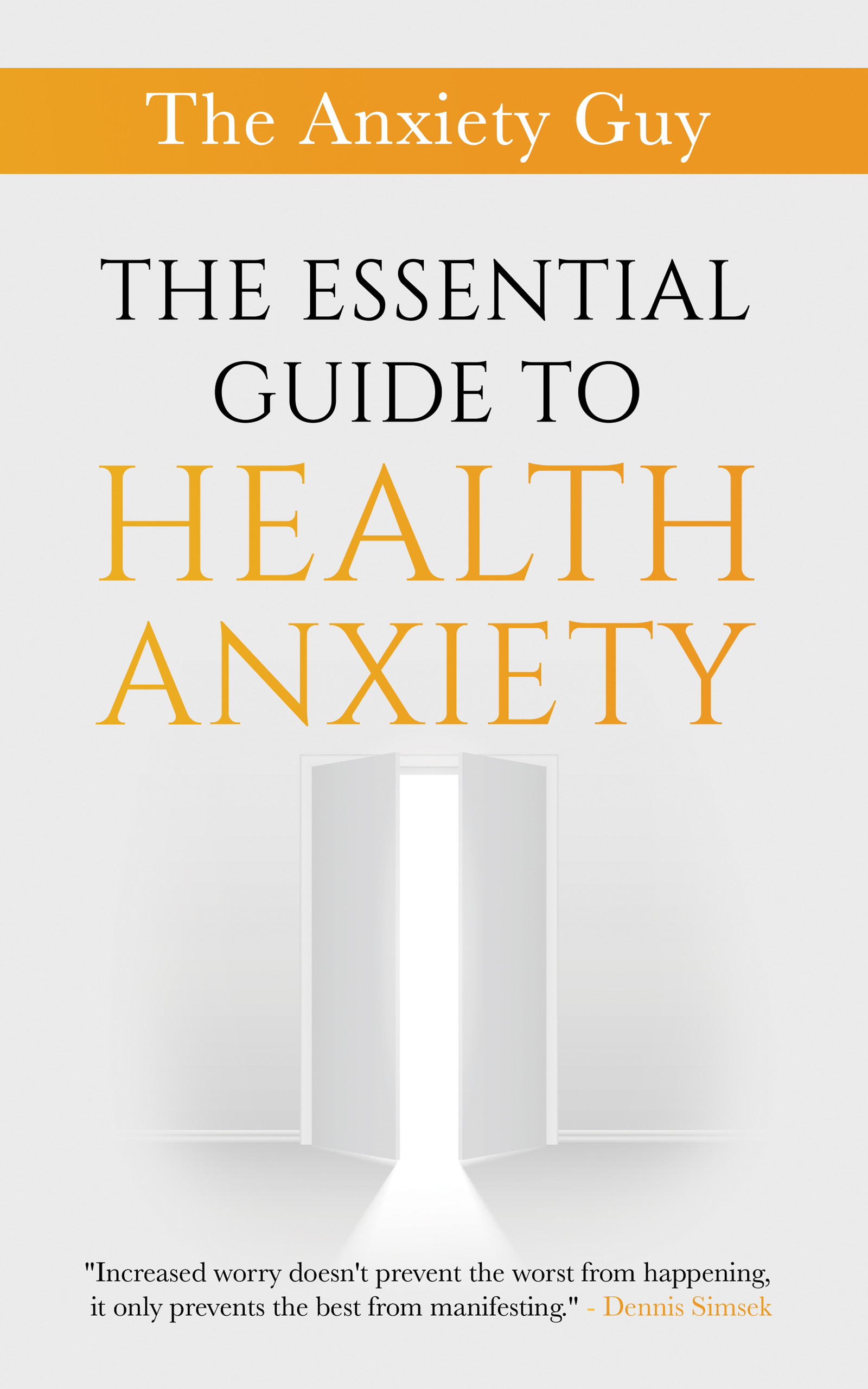The mind of someone experiencing hyperfixation anxiety devotes extreme obsessiveness toward a single thought or worry which causes problems in managing other essential areas of their existence. The fixation generates substantial discomfort which prevents people from withdrawing themselves from preoccupying thoughts and consequently disrupts their normal functioning. Independent existence of hyperfixation anxiety occurs but professionals typically link its development to obsessive-compulsive disorder (OCD) or generalized anxiety disorder (GAD).1
Users who know the origins and prompts and resultant symptoms of hyperfixation anxiety can develop useful methods to achieve control. Patients can use cognitive-behavioral therapy (CBT) together with mindfulness techniques along with building a strong support group to help overcome obsessive focus and reclaim emotional stability.
What Causes Hyperfixation Anxiety?
Hyperfixation anxiety develops because of multiple factors such as heredity, brain chemical irregularities, environmental triggers and learned conduct patterns. People who have inherited anxiety disorder traits tend to develop hyperfixation habits more often. The biochemical imbalance of serotonin and dopamine compounds with each other to sustain obsessive focus in some individuals.2
The stressors arising from environmental circumstances including trauma and prolonged stress and important lifetime events trigger the development of hyperfixation anxiety. A major life disruption mostly leads people to develop obsessive thought patterns that create enduring ruminations about their fears and uncertainties. The emergence of hyperfixation behaviors depends significantly on personality traits which include perfectionism together with excessive analytical thinking.
Hyperfixation Symptoms: How to Recognize the Signs
It becomes hard to discern when intense interest crosses the line between being a common fascination and indicating the presence of hyperfixation anxiety. Common symptoms include:3
- Neglecting Basic Needs: Excessive concentration on a single subject causes students to forget basic personal care tasks such as eating or drinking and neglecting their personal hygiene.
- Losing Track of Time: People can spend hours without awareness as they focus on their current activities or thoughts.
- Ignoring Social Connections: People close to the hyperfixated individual experience neglect as their attention shifts towards their obsessive interest.
- Obsessive Scrolling: People cope when they spend prolonged durations staring at their smartphones checking social media.
- Missing Important Events: A fixation causes individuals to forget both obligations and social events and responsibilities.
- Interference with Daily Life: The present focus creates such mental disruption that one finds it difficult to carry out work, education, or household work.
- Reduced Awareness of Surroundings: A person in a state of hyperfixation will ignore both spoken conversation and environmental situations.
Recognizing these symptoms is the first step toward managing hyperfixation anxiety effectively.
How Hyperfixation Anxiety Impacts Daily Life
People who have hyperfixation anxiety experience their overwhelming obsessive behavior causing problems with daily functioning. Common effects include:3
- Difficulty Concentrating: The overwhelming dominant thought or worry streams through the mind preventing people from focusing on tasks they normally complete at work, school or home.
- Social Isolation: Constant obsessive thoughts commonly stand between a person and authentic social connections with friends and family.
- Emotional Distress: Endless mental revision leads to feelings of fatigue together with irritability and a loss of hope.
- Increased Risk of Mental Health Issues: Excessive and persistent fixation tends to increase the risk of depression alongside other anxiety-related disorders.
Cognitive Behavioural Therapy Strategies for Managing Hyperfixation Anxiety
Hyperfixation anxiety responds best to the effective intervention methods provided by cognitive-behavioral therapy (CBT). Through the identification and challenge of dysfunctional thinking patterns people can build new healthier approaches to controlling their compulsive preoccupation.4
- Thought Challenging: The therapy method requires identifying incorrect or unfavorable thoughts regarding hyperfixation to replace them with fairer interpretations.
- Exposure Therapy: People can increase their resistance to anxiety and weaken obsessive thoughts when they carefully face their scary thoughts in a step-by-step manner under controlled conditions.
- Mindfulness and Meditation: Mindfulness practice helps people shift their attention from repetitive worries into current experiences.
- Heal Your Childhood Traumas: Work on regression to handle unconscious associations developed during overwhelming past experiences. This work must resolve past traumas which can change present fixation points. The solution of previous traumas leads to new perspectives about current problem-centered thoughts.
- Use an Elastic Band Technique: Apply an elastic band to your wrist and use a gentle snap upon noticing yourself getting fixated. When you notice the elastic band you should understand that your body will regain equilibrium on its own so you should avoid fighting intrusive thoughts mentally. Allowance changes perception.
- Take an Inventory of Your Checklist: When you feel fixated you should review your mental checklist before lowering your self-imposed expectations.
Lifesytle Changes to Help Manage Symptoms
- Engage in self-care: Taking care of oneself is crucial when overcoming this old habit. This includes getting enough sleep, eating a balanced diet, and engaging in activities that bring joy and relaxation. Remember, these are lifestyle changes though, and not a means to an anxiety end.5
-
Prioritize sleep: A proper amount of good sleep remains vital both for anxiety management and the enhancement of mental wellness. To enhance sleep quality people should maintain a regular sleep cycle along with developing peaceful bedtime processes.6
-
Eat a balanced diet: Mental health shows strong sensitivity to the effects of proper nutrition. Eating a balanced diet containing fruits and vegetables together with whole grains and lean proteins and healthy fats promotes good wellness.7
-
Engage in activities that bring joy: Hobbies which create happiness serve as a way to combat your constant anxiety while also helping to break free of obsessive thoughts. Participating in activities ranging from reading to painting and instrument playing and nature appreciation creates an environment which leads to better mental health.8
-
Practice relaxation techniques: Engaging in relaxation techniques, such as taking a warm bath, practicing yoga, or listening to calming music for anxiety, can help reduce stress and promote relaxation.9
-
Connect with others: Establishing enduring social connections remains critical for people to handle anxiety together with hyper fixation. Spend time with family and seek support for your anxiety from friends or support groups while engaging in discussions that have meaning to reconnect with your community.10
“Fixation on bodily symptoms of anxiety may be habitual, but habits can change if we truly understand the path they are taking us down.”
Building a Strong Support System
Aiding individuals to manage hyperfixation anxiety becomes easier by consulting with friends or family members and mental health experts. The following methods enable communities to create a supportive network:11
- Talking About Your Experiences: Discussing your concerns with dependable individuals provides both emotional recovery and new understanding.
- Joining a Support Group: Through support groups individuals can exchange experiences and acquire knowledge from participating with fellow members having identical circumstances.
- Seeking Professional Help: People facing hyperfixation anxiety in their daily routines need to consult with a therapist to receive structured expert advice and coping approaches.
-
Provide a listening ear: Sometimes, all individuals need is someone to listen without judgment. Friends and family members can provide a safe space for individuals to express their thoughts and feelings.
-
Offer reassurance: When experiencing hyper fixation patients commonly deal with inner uncertainties which lead them to seek repeated confirmation from others. Support networks use their guidance to validate the emotions experienced by people affected by hyper fixation. However, make sure you don’t fall victim to needing this reassurance at all times, as it may cause a reliance long term.
-
Offer practical help: People can receive practical assistance through their support system either through help with their daily responsibilities or resources to handle their anxiety and obsessive thinking. The implemented support systems help reduce pressure and emotional exhaustion faced by people.
For people who experience hyper fixation they need strong support from others. A support system consisting of friends and family members and mental health professionals proves essential to deliver crucial aid along with understanding when people face difficult moments. The support network provides several beneficial forms of assistance for people struggling with hyper fixation.
Taking the Next Steps Toward Recovery
People can exit the overwhelming state of hyperfixation anxiety through proper support systems combined with necessary tools. Individuals achieve mental health improvement through cognitive-behavioral therapy together with mindfulness practice while utilizing their support system for guidance. the Health anxiety Program is Wonderful For this Type of Anxiety. you can find it below
The healing journey requires time and patients need to show themselves the same compassion in each step of their recovery. Looking for help with small regular changes allows lasting improvement of emotional wellbeing while increasing satisfaction with life.
More practical outlets for reducing anxiety and hyper fixation
Treatment for anxiety and hyper fixation needs a full-scale approach to solve both anxiety problems and fixation issues. These following approaches offer assistance to people who want to decrease anxiety levels while restoring normal fixation abilities:
1. Practice letting go: Not every internally led thought needs an answer, and not every anxiety symptom needs a reaction. Here are two popular meditation videos on YouTube for general mental fixation, and for health anxiety.
2. Challenge negative thoughts: Negative thoughts often contribute to anxiety and hyper fixation. Learning to challenge and respond to these thoughts (rather than instinctively react) can help individuals gain a more balanced perspective and reduce anxiety levels.
3. Engage in physical activity: Regular physical activity has been shown to reduce anxiety and improve overall mental health. Engaging in activities such as walking, jogging, yoga, or dancing can help release tension and promote a sense of well-being. If you have Hyper-sensitivity from anxiety however, you may need to reduce the intensity of your exercising of the time being.
4. Practice self-compassion: Being kind and compassionate towards oneself is essential when dealing with anxiety and hyper fixation. Acknowledging that it is okay to have anxious thoughts and that it does not define one’s worth can help reduce stress and promote self-care.
5. See triggers and signals from your body: These signals are showing you how afraid your inner child still really is, it’s also showing the degree of negative feelings that still reside in mind and body. See them as information you can use rather than a feeling that needs to be followed.
Comment below on your own personal experience with these mental health patterns.
References
- Hyperfixation Anxiety: Understanding and Managing Obsessive Focus | Grouport Journal. (2025). Grouporttherapy.com. https://www.grouporttherapy.com/blog/hyperfixation-anxiety [↩]
- Hyperfixation: Causes, Effects, and Ways to Manage It. (2024, December 16). West Georgia Wellness Center. https://westgawellnesscenter.com/hyperfixation/ [↩]
- Ashinoff, B. K., & Abu-Akel, A. (2019). Hyperfocus: the forgotten frontier of attention. Psychological Research, 85(1), 1–19. https://doi.org/10.1007/s00426-019-01245-8 [↩][↩]
- Chand, S. P., Kuckel, D. P., & Huecker, M. R. (2023, May 23). Cognitive Behavior Therapy. Nih.gov; StatPearls Publishing. https://www.ncbi.nlm.nih.gov/books/NBK470241/ [↩]
- Pilkington, K., & Wieland, L. S. (2020). Self-care for anxiety and depression: a comparison of evidence from Cochrane reviews and practice to inform decision-making and priority-setting. BMC Complementary Medicine and Therapies, 20(1). https://doi.org/10.1186/s12906-020-03038-8 [↩]
- High-quality sleep promotes resilience to depression and anxiety. (2023). University of York. https://www.york.ac.uk/news-and-events/news/2023/research/sleep-promote-resilience-to-depression-and-anxiety/ [↩]
- Aucoin, M., LaChance, L., Naidoo, U., Remy, D., Shekdar, T., Negin Sayar, Cardozo, V., Rawana, T., Chan, I., & Cooley, K. (2021). Diet and Anxiety: A Scoping Review. Nutrients, 13(12), 4418–4418. https://doi.org/10.3390/nu13124418 [↩]
- Pressman, S. D., Matthews, K. A., Cohen, S., Martire, L. M., Scheier, M., Baum, A., & Schulz, R. (2009). Association of Enjoyable Leisure Activities With Psychological and Physical Well-Being. Psychosomatic Medicine, 71(7), 725–732. https://doi.org/10.1097/psy.0b013e3181ad7978 [↩]
- Norelli, S. K., Long, A., & Krepps, J. M. (2023, August 28). Relaxation Techniques. Nih.gov; StatPearls Publishing. https://www.ncbi.nlm.nih.gov/books/NBK513238/ [↩]
- S, S. (2022). A Critical Study On Socializing And Its Benefits On Mental Health. A Critical Study on Socializing and Its Benefits on Mental Health. https://doi.org/10.14293/s2199-1006.1.sor-.ppjqn0i.v1 [↩]
- Agnes, George, Asa, Wang, M.-P., Polly, Angie, Esther, Lin, C.-C., & Lam, T.-H. (2022). Mental Health, Support System, and Perceived Usefulness of Support in University Students in Hong Kong Amidst COVID-19 Pandemic: A Mixed-Method Survey. International Journal of Environmental Research and Public Health, 19(19), 12931–12931. https://doi.org/10.3390/ijerph191912931 [↩]





















I absolutely hyper fixate on what I have to accomplish each day. As soon as I wake up it starts. Getting enough sleep and finding some joy is really key for me. Just talking things out with other people, using your support system, and just practicing some self-compassion. It can be hard when you already have anxiety and it gets fixed on one particular aspect in your life, so having support is so helpful.